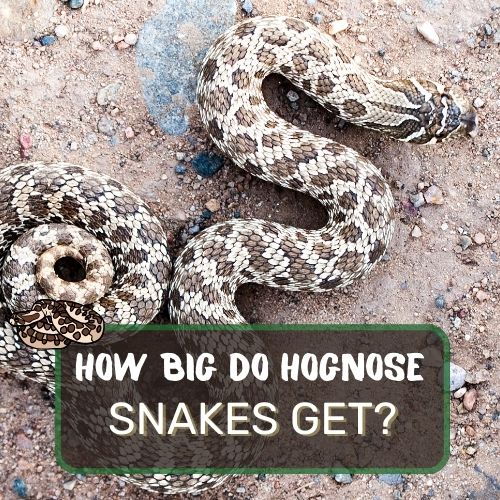
Curious about hognose snakes and their dimensions?
If you’ve ever wondered “how big hognose snakes get,” you’re in for a captivating journey through the world of these enchanting reptiles.
In this article, we’re delving into the intriguing size variations of hognose snakes, exploring the average lengths of different species, from Western to Eastern and Southern.
Discover the factors that influence their growth, from genetics and diet to habitat and development stages.
Whether you’re an aspiring snake enthusiast or simply curious about these creatures, this article offers insights into hognose snake sizes that will enrich your understanding of these captivating serpents.
Table of Contents
- 1 How Big Do Hognose Snakes Get? (Between 2 – 3 feet)
- 2 Western Hognose Snake Size
- 3 Eastern Hognose Snake Size
- 4 Southern Hognose Snake Size
- 5 Factors Affecting Hognose Snake Size
- 6 Largest Recorded Hognose Snake
- 7 Size Measurement Techniques
- 8 Growth and Development of Hognose Snakes
- 9 Comparison of Hognose Snake Size to Other Snake Species
- 10 How to Estimate the Size of a Hognose Snake
- 11 FAQ
- 12 Conclusion
How Big Do Hognose Snakes Get? (Between 2 – 3 feet)
Hognose snakes, captivating members of the snake family, typically reach an average size of around 2 to 3 feet in length. These enchanting reptiles come in different species, with Western, Eastern, and Southern varieties showcasing slight variations in size. Male hognose snakes are generally slightly smaller than females. However, instances of larger hognose snakes exceeding 5 feet in length have been documented, highlighting the potential for size diversity within the species. Factors such as genetics, habitat, diet, and overall health influence their growth patterns.
Hognose snakes make for manageable and appealing pets due to their moderate size and intriguing behaviors, making them a favorite among reptile enthusiasts.
Western Hognose Snake Size

In the world of hognose snakes, size is a captivating topic that sparks curiosity. These unique reptiles, known for their upturned noses and charming behavior, exhibit size variations not only across different species but also between genders.
Let’s explore the dimensions of Western Hognose snakes and uncover the intriguing aspects of their growth patterns.
Average Size of Western Hognose Snakes
The Western Hognose snakes, those charismatic characters of the snake realm, typically attain an average length of around 2 to 3 feet.
This size range makes them relatively manageable pets for snake enthusiasts, and their popularity among reptile lovers is easily understandable. Picture a snake that’s approximately as long as your yardstick – that’s the Western Hognose in all its glory!
Gender Size Differences
Ah, the age-old gender size difference – it’s not limited to humans! Among Western Hognose snakes, males generally stay slightly smaller than their female counterparts. While males might measure around 2 feet, females could stretch a bit further to reach that 3-foot mark.
This size contrast, though not monumental, is a fascinating biological characteristic that adds a touch of intrigue to the world of hognose snakes.
Growth Patterns in Captivity
One of the joys of keeping hognose snakes in captivity is the opportunity to witness their growth firsthand. In the controlled environment of a terrarium, these snakes have the chance to flourish and develop steadily.
With a balanced diet, proper humidity, and comfortable temperatures, you might find that your Western Hognose buddy reaches its full size potential sooner than you expected.
It’s akin to watching a tiny noodle transform into a captivating and well-proportioned creature.
Eastern Hognose Snake Size

As we transition from the Western stars to the Eastern counterparts, the subject of size takes on an intriguing new perspective. Eastern Hognose snakes, originating from a distinct geographical area, bring their own set of size characteristics into the spotlight.
Average Size of Eastern Hognose Snakes
The Eastern Hognose snakes, often found in regions distinct from their Western relatives, display a size range that closely mirrors that of their counterparts. These captivating creatures usually measure around 2 to 3 feet as well.
It’s fascinating to observe how these two species, despite differences in habitat and appearance, converge when it comes to their size potential.
Comparing Size between Eastern and Western Hognose Snakes
While the size averages align between Eastern and Western Hognose snakes, it’s important to note that individual specimens can deviate from the norm. Just like humans, snakes have their unique growth trajectories.
Thus, while the averages might match up, encountering an Eastern Hognose that’s slightly smaller or larger than its Western counterpart is entirely possible.
Factors Influencing Size Variations
Nature operates in mysterious ways, and size variations within hognose snakes are a prime example. Elements such as genetics, diet, habitat, and overall health play pivotal roles in determining the eventual size of a hognose snake.
These variables weave a rich tapestry of size diversity, rendering each hognose snake a distinct character in the grand narrative of the snake world.
Southern Hognose Snake Size

As our exploration of hognose snake sizes continues, we find ourselves in the realm of the Southern Hognose snake. Just as each species has its unique characteristics, so too does the Southern Hognose exhibit distinct size traits that add to the allure of these remarkable reptiles.
Average Size of Southern Hognose Snakes
The Southern Hognose snakes, inhabiting their own distinct regions, boast an average length that typically falls within the range of 1.5 to 2.5 feet.
While slightly smaller than their Western and Eastern counterparts, these snakes still exude their signature charm.
Imagine encountering a snake that could comfortably coil itself within the span of a ruler – that’s the Southern Hognose snake for you.
Comparing Size between Southern and Western Hognose Snakes
Drawing parallels and distinctions between hognose snake species is an engaging exercise. When comparing Southern and Western Hognose snakes, it’s evident that while Southern
Hognose snakes are generally smaller, their character and charisma remain equally captivating. This variation in size showcases the adaptability and diversity that nature bestows upon different species.
Impact of Habitat on Size Variations
Habitat plays a pivotal role in shaping the size variations we observe among hognose snakes. Southern Hognose snakes have adapted to their unique environments, which can influence their growth patterns.
Factors such as available prey, temperature fluctuations, and shelter availability all contribute to the size spectrum within this species.
Factors Affecting Hognose Snake Size

The dimensions of hognose snakes are not solely a result of chance; they are influenced by a fascinating interplay of various factors. Understanding these factors sheds light on the nuanced world of snake growth and size variations.
Genetics and Breeding
Genetics lay the foundation for a snake’s growth potential. Breeding practices also impact size, as controlled breeding can influence the expression of certain traits.
Responsible breeding practices ensure the preservation of desirable size characteristics within hognose snake populations.
Environmental Factors
The environment in which a hognose snake resides significantly shapes its growth trajectory. Factors such as temperature, humidity, and available space all contribute to how a snake develops.
Snakes in optimal environments tend to reach their full-size potential more readily.
Nutrition and Feeding Habits
A well-rounded diet is crucial for healthy growth in hognose snakes. Nutrition directly affects their size and overall development.
A balanced diet of appropriately sized prey ensures that hognose snakes can achieve their genetic size potential.
Age and Growth Rates
Just like any other creature, hognose snakes experience growth spurts during their early years. Growth rates can vary, and factors such as genetics, nutrition, and environmental conditions influence how quickly a snake reaches its adult size.
The intricate dance of genetics, environment, and factors like nutrition and age collectively determine the size of hognose snakes.
By peering into these elements, we gain a deeper appreciation for the complexity and wonder that define the world of these endearing reptiles.
Largest Recorded Hognose Snake
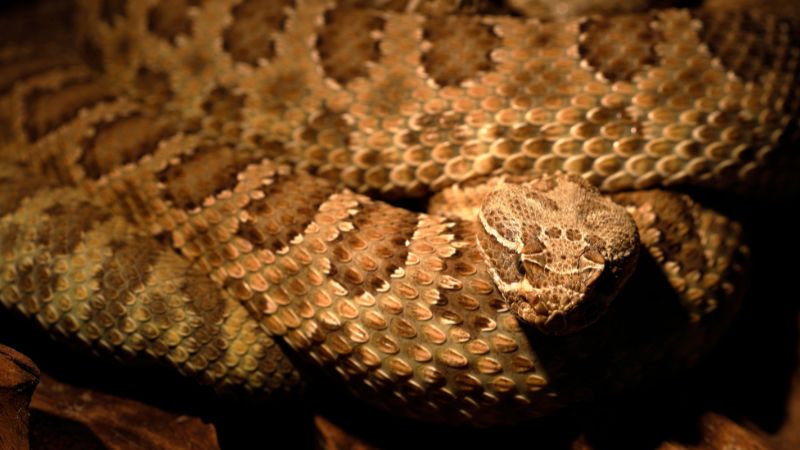
In the tapestry of hognose snake lore, a fascinating chapter is etched by the accounts of the largest recorded hognose snake.
This real-life example adds a dash of wonder to the already captivating world of these reptiles, as we uncover the impressive dimensions of this extraordinary specimen.
The Largest Recorded Hognose Snake
Among the annals of hognose snake history, one notable case stands out—the story of the largest recorded hognose snake. This exceptional individual serves as a testament to the potential size attainable within the species.
The story of this snake not only captivates the imagination but also sheds light on the range of possibilities within the hognose world.
Length and Weight Measurements
The dimensions of this remarkable hognose snake were nothing short of astonishing. Measuring an impressive length of over 5 feet, this snake set a new standard for size among its peers.
In addition to its remarkable length, the snake also boasted a weight that exceeded expectations, further solidifying its position as a colossal member of the Hognose family.
The Significance of the Record
The record-breaking hognose snake not only captured the attention of enthusiasts but also sparked discussions about the potential size capabilities of hognose snakes.
The implications of this record extend beyond mere measurements—it raises questions about the interplay between genetics, environment, and growth factors that contribute to such exceptional cases.
Size Measurement Techniques
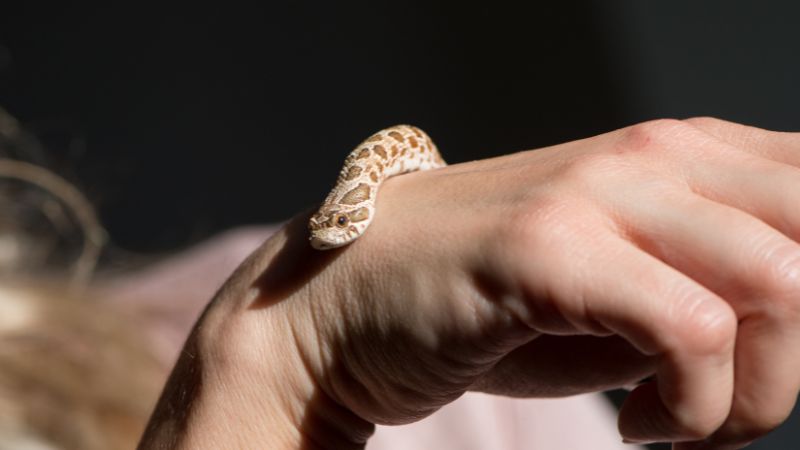
The task of measuring snake size is no simple feat, and the world of hognose snakes is no exception. Accurate size measurements are not only essential for understanding growth patterns but also for conservation efforts and research.
Let’s delve into the techniques and challenges associated with measuring hognose snake size.
Standard Measuring Practices
The standard method for measuring hognose snake size involves stretching the snake out along a flat surface and measuring from the tip of the nose to the end of the tail.
This approach provides a consistent and comparable measurement that can be used to track growth over time.
Challenges in Accurately Measuring Snake Size
Measuring snake size presents its own set of challenges. Snakes are flexible and can vary their body posture, making it difficult to obtain precise measurements.
Additionally, some snakes might not fully extend, leading to potential discrepancies in recorded lengths.
Alternative Methods for Estimating Size
Given the challenges of measuring size directly, researchers and enthusiasts have explored alternative methods for estimating snake dimensions.
Techniques such as photogrammetry, which involves using photographs to extrapolate measurements, have gained traction as potential solutions to the measurement conundrum.
Growth and Development of Hognose Snakes

The journey of hognose snakes from hatchlings to adulthood is a captivating tale of growth and development. Understanding the intricacies of their life stages and the factors influencing their growth provides a comprehensive view of these enchanting creatures.
Life Stages and Size Changes
Hognose snakes, like all creatures, undergo distinct life stages that are accompanied by size changes. From the moment they hatch as adorable hatchlings, they embark on a journey of growth that gradually transforms them into their adult form.
Each life stage reveals new dimensions and characteristics that contribute to their uniqueness.
Growth Rates in Captivity vs. the Wild
In the realm of hognose snakes, growth rates can vary depending on their environment. Snakes raised in captivity tend to experience steadier and more controlled growth due to optimized conditions and consistent access to food.
On the other hand, those in the wild might face challenges such as fluctuations in food availability and environmental conditions, leading to more varied growth rates.
Factors Influencing Growth and Development
Numerous factors shape the growth and development of hognose snakes. Genetics, diet, temperature, humidity, and overall health play integral roles in determining how quickly these reptiles reach their mature size.
The interplay between these elements weaves a tapestry of growth patterns unique to each individual snake.
Comparison of Hognose Snake Size to Other Snake Species

To truly grasp the dimensions of hognose snakes, it’s enlightening to compare their size with that of other snake species. This comparative approach not only highlights their uniqueness but also offers insights into the diverse world of serpents.
Size Comparisons to Similar Snake Species
When sizing up hognose snakes, it’s helpful to draw parallels with similar snake species. Comparisons with fellow colubrids provide context for understanding hognose snake dimensions.
While some species might match hognose snakes in size, others might dwarf or surpass them, showcasing the array of sizes within the snake kingdom.
Notable Differences in Size and Body Structure
Within the realm of snakes, the differences in size and body structure are astounding. Some species exhibit elongated and slender forms, while others boast more robust builds.
- Upturned Snout: The hognose snake’s most defining feature is its upturned snout, resembling a hog’s nose. This unique structure aids in digging and burrowing in sandy or loose soils.
- Size: Hognose snakes are relatively small to medium-sized. They typically range from 15 to 40 inches in length, depending on the specific species and gender. This size is modest when compared to larger species like pythons or boas.
- Body Structure: Hognose snakes possess a stout and robust body, contrasting with the slender and elongated bodies seen in species like rat snakes or garter snakes.
- Keel-like Scales: Unlike many other snakes with smooth scales, hognose snakes have keeled dorsal scales, giving their skin a slightly rough texture.
- Defensive Display: Unique to their body structure, when threatened, hognose snakes can flatten their necks, creating a broad, flattened appearance, though they don’t have the true hood structure seen in cobras.
These structural characteristics make the hognose snake distinct, highlighting the varied physical adaptations snakes have developed across different species.
Hognose snakes, with their characteristic upturned noses and distinct facial features, carve out a unique niche in the spectrum of snake shapes and sizes.
Implications for Keeping Hognose Snakes as Pets
Size comparisons have implications for keeping hognose snakes as pets. Their manageable dimensions make them a suitable choice for snake enthusiasts of various levels of experience.
Understanding how hognose snakes measure up to other species guides potential pet owners in making informed decisions about snake selection and care.
How to Estimate the Size of a Hognose Snake

Estimating the size of a hognose snake is an art in itself, one that involves observation, measurement, and a keen eye for detail. While direct measurements are ideal for accuracy, there are alternative techniques for gauging size.
Visual Indicators of Size
Observing visual cues can offer a rough estimate of a hognose snake’s size. Comparing the snake’s length to common objects or the size of its head relative to its body can provide insights into its dimensions.
While not as precise as measurements, these indicators can offer a quick reference.
Measuring Techniques for Accurate Estimates
Measuring the size of a hognose snake accurately is essential for various reasons, including health assessments and habitat provision. Here’s how to do it:
- Preparation: Ensure the snake is calm. Handling it gently for a few minutes can help reduce its stress.
- Surface Selection: Lay the snake on a flat, smooth surface. A large table or the floor with a non-slippery mat can work.
- Measurement Tool: Use a soft, flexible measuring tape or a snake sizing chart.
- Procedure: Starting from the tip of the snout, gently extend the tape along the snake’s spine to the tip of its tail.
- Accuracy: It’s crucial to ensure the snake remains straight during measurement. Having a second person can help.
- Safety: Always approach the snake calmly and avoid sudden movements to prevent stress or defensive reactions.
Remember, regular measurements can help monitor growth and health, especially in juvenile snakes.
Common Mistakes to Avoid
When estimating size, avoid common mistakes such as inaccurately measuring curved snakes or excluding the length of the tail.
These errors can lead to misrepresentations of a snake’s true size. Taking time to measure accurately enhances our understanding of these creatures.
FAQ
As we delve into the realm of hognose snake size, it’s only natural that questions arise. Here are answers to some frequently asked questions about these captivating reptiles and their dimensions:
Are Hognose Snakes Good Pets?
Hognose snakes often make fantastic pets for reptile enthusiasts. Their manageable size, unique behavior, and captivating appearance make them appealing to both beginners and experienced keepers. With proper care and understanding of their needs, hognose snakes can thrive in captivity.
What Is the Largest Hognose Snake Ever Recorded?
The record for the largest hognose snake ever recorded stands as a testament to the potential size within the species. While specific records may vary, instances of hognose snakes exceeding 5 feet in length have been documented, showcasing the diversity within this remarkable family of snakes.
Will a Hognose Snake Bite You?
Hognose snakes are known for their distinctive behaviors, including their defensive tactics. While they might strike or even bluff as a defense mechanism, bites from hognose snakes are relatively rare and non-venomous. Their bites are usually harmless and not a cause for major concern.
Are Hognose Snakes Aggressive?
Hognose snakes are not typically aggressive in the same way that some other snake species can be. They are known for their unique defensive behaviors, such as puffing up, hissing, and even playing dead. However, these behaviors are usually more of a show than actual aggression.
How Long Do Hognose Snakes Live?
Hognose snakes have a moderate lifespan compared to other snake species. In captivity, with proper care, they can live anywhere from 10 to 20 years. Factors such as genetics, habitat, and overall well-being contribute to their longevity.
Conclusion
As we wrap up our exploration of hognose snake size, we’ve journeyed through the intricacies of growth patterns, debunked misconceptions, and delved into the factors that shape these remarkable creatures.
The world of hognose snakes offers a tapestry of diversity and wonder, reminding us that even in the dimensions of size, there is a wealth of stories waiting to be discovered.
Whether you’re an avid snake enthusiast or a curious newcomer, the dimensions of hognose snakes provide a window into the complexity and beauty of the natural world.

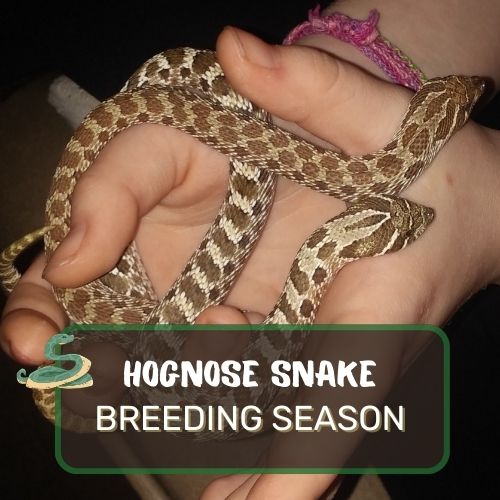
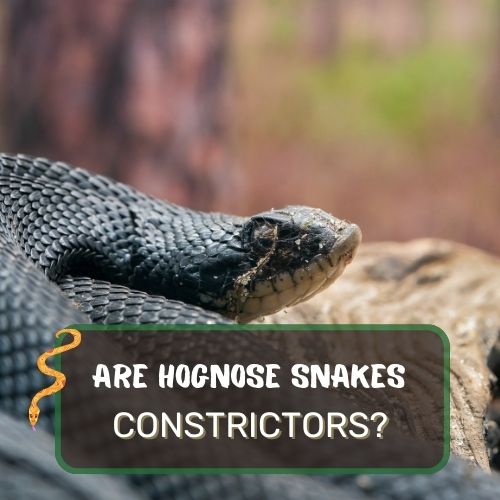
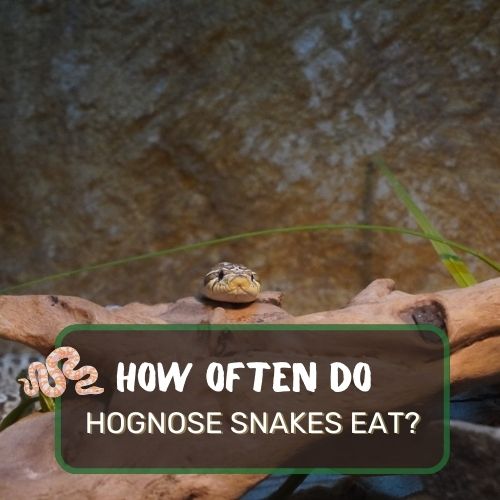
0 Comments